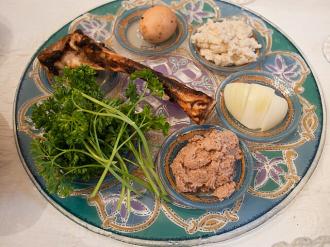Recommendation follows strong evidence that early exposure promotes tolerance.
In recent years, peanut allergies among kids have soared, creating life-long sensitivities that can be deadly and banishing beloved PB&Js from lunch boxes everywhere. While the cause is still unclear, health experts are confident they’ve found the solution to the plague of peanut allergies: peanuts.
Parents, pediatricians, and other healthcare providers are now firmly advised to start feeding infants peanut-laced foods to head off allergies before they develop. Based on mounting evidence, experts think there’s a “window of time in which the body is more likely to tolerate a food than react to it, and if you can educate the body during that window, you’re at much lower likelihood of developing an allergy to that food,” Matthew Greenhawt, a food allergy expert, told The New York Times.
As such, a National Institutes of Health panel of specialists, including Dr. Greenhawt, released today a new set of guidelines for tossing peanuts into that window.
The guidelines, published in The Journal of Allergy and Clinical Immunology (and co-published in several others), are divided into three sections, based on a child’s risk of developing a peanut allergy.
The infants in the high-risk category are those that suffer from severe eczema, an egg allergy, or both. For these little ones, the experts recommend they start trying peanut-containing foods around four to six months of age—after solid foods are introduced. This needs to be done with the consultation with a healthcare provider, and it may be necessary or prudent to have the infant go through an allergy test first, like a skin prick test or an oral food challenge, before the dietary introduction.
Infants at moderate risk of developing a peanut allergy are those with mild to moderate eczema. For these kids, experts say nutty foods should be introduced around six months.
And low-risk kids with no eczema or any other known food allergies should go about eating nuts at whatever age their parents deem appropriate, based on preferences and customs.
Experts note that giving kids this young whole peanuts or straight-up peanut butter creates a choking hazard and should always be avoided. Instead, parents should mix peanut butter into water, milk, or formula. They can also sprinkle peanut powder or stir nut paste into yogurt, apple sauce, or other easy-to-swallow foods. Experts recommend kids get around six to seven grams of peanuts, doled out over three feedings within a week. (Here are some instructions and recipes.)
The guidelines are based on several recent studies showing that early exposure reduces the risk of developing peanut allergies. This includes a landmark randomized trial from 2015 that involved more than 600 infants at high risk of developing peanut allergies.
Researchers in that study first divided the kids into two groups based on whether they showed a sensitivity to peanuts based on a skin-prick test—530 came up negative, 98 were positive. Then, they randomly assigned them to eat or avoid peanut-containing foods and followed up with them when they were five years old. Within the 530 initially non-sensitive kids, 13.7 percent of peanut-avoiding kids developed allergies by age five, but only 1.9 percent of peanut-eating kids developed them. Within the 98 initially sensitive kids, 35.3 percent of peanut-avoiding kids developed allergies by age five, while only 10.6 percent of peanut-eating kids had allergies.
That study spurred an interim guidance in August 2015 that introducing kids at risk of peanut allergies to peanuts was safe and could cut down risks.
In 2010, peanut allergies among kids hit 2.0 percent nationwide. In 1999, prevalence was at just 0.4 percent.
















